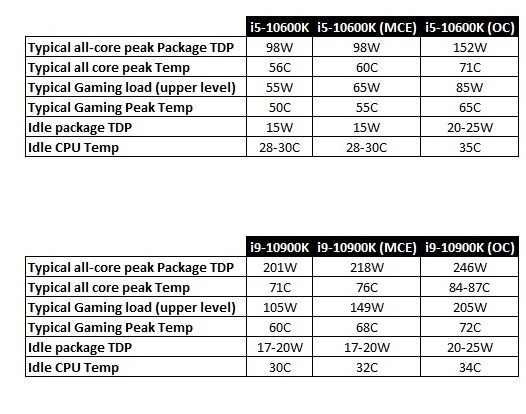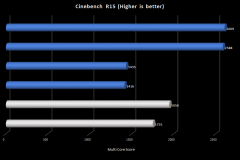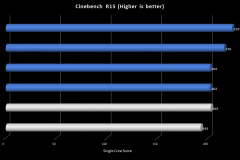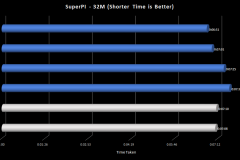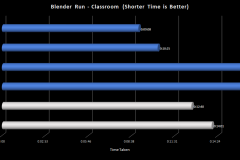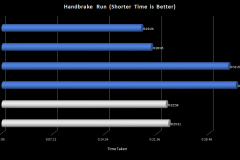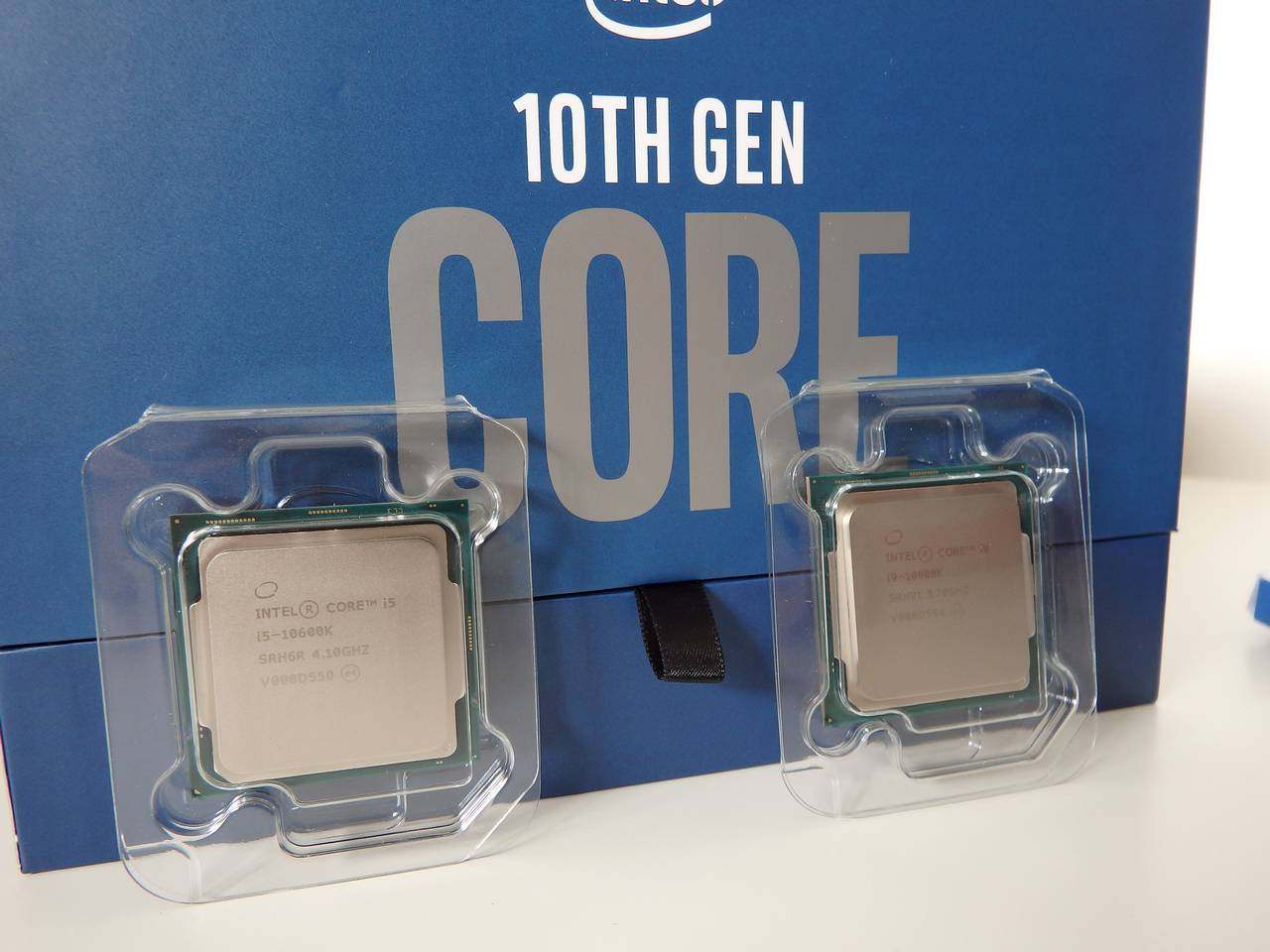Power and thermals
Thermals were not as bad as I’d expected, I wouldn’t call either CPU ‘hot’ under typical operating conditions. When you start overclocking all bets are off and any CPU can get hot – especially when looking at 6 cores or more under the IHS.
Power usage was higher than I’d like but I’m not the sort of person that worries about their electricity bill when buying a PC. This also depends on the workloads that you throw at your workstation. The table below shows what to expect under different workloads and in different modes for each CPU. The i9-10900K can draw a lot of power when you let it – it won’t be an issue for some people but it is something to be aware of and if you plan to buy an i9-10900K for overclocking and creative workloads then don’t cheap-out on a cooler.
I used a 360mm Thermaltake Floe water cooler with 1600 RPM fans – so keep that in mind when looking at the above table.
The cooling solution is important here because if it’s able to keep the CPU under 70C with an i9-10900K, you’re a candidate for Thermal Velocity Boost of up to 4.9GHz across all 10 cores or 5.3GHz for a single core.
Thermally, the i5-10600K seemed very reasonable. It idled at around 30C and typically operated around 50-60 when gaming.
Comparison to the i9-9900K
As another point of comparison, I’ve added the 9th Gen i9-9900K to the graphs to show the improvement you can expect in the i9-10900K and to see how close the i5-10600 gets with the addition of hyperthreading. The i9-9900K has 8cores/16 threads so frequency aside, this sits right in between both the 10th Gen i5 and i9 CPUs I’ve tested. Keep in mind that the i9-9900K results are older, but I’ve used the same RAM, cooler and GPU. To be fair, I’ve included results for both the stock Intel forced limits and the results when using the MultiCore Enhancement (MCE) function.
Single threaded performance is improved in the i9-10900K, but the real difference is in the creative tests with those extra 2 cores/4 threads. This is the closest I could get to ‘apples to apples’ but from the limited data set that I have it consistently shows the new i9-10900K is a little better in single core performance and notably better in multi core scenarios than the i9-9900K that it replaces.
Final Thoughts
The Intel® Z490 boards are not cheap – and neither are the AMD X570 boards, to be fair. You will need a new motherboard if you buy a 10th Generation Intel® Core CPU. Intel® made this clear in advance and there will be plenty of choice for the masses. I was impressed with the ASUS MAXIMUS XII EXTREME, particularly the BIOS, the build quality and the overall performance. The MAXIMUS XII EXTREME has a lot of features to explore and it seems to make the most of the Z490/10th Generation Core CPUs. Sadly, this excludes PCIe Gen4 – I had hoped that this would be included with Intel’s 10th Generation offering.
One factor to consider if you’re looking to upgrade or build a new rig is the total cost of ownership – how much will the motherboard and cooler cost for all platforms that you’re considering, regardless of whether it’s AMD Ryzen, Intel 9th Gen or Intel 10th Gen. The AMD X570 boards and the Intel Z490 boards are both high-end and have the high-end price tag to match the feature set.
Gaming performance on both 10th Generation Intel CPUs was great and I think the majority of gamers would struggle in a blind test to identify which CPU they were using when only gaming. These CPUs, at least to me, felt so close in gaming performance that I was leaning towards the cheaper i5-10600K with plans on where to better spend the extra $500+.
Conclusion
The i5-10600K looked good next to the i9-10900K from a gaming and general use perspective. If you don’t do a lot of heavy all-core workloads and you just want to build a gaming platform, you’re not going to be sacrificing much here. For people who ‘just game’, the i9-10900K is unlikely to justify being double the price for the performance difference. 6 Cores/12 Threads and a 4.5/4.8 boost frequency is going to do well with gaming in 2020 and for the foreseeable future. The $500 price tag places it $100 more than the AMD Ryzen 5 3600X. The i5 option is a mid-range offering in terms of price and all-core performance – people on a budget will need to drop further down the line-up or consider the AMD alternatives.
No doubt about it, the i9-10900K is a worthy successor to the last generation i9-9900K. The new arrival has 25% more cores and a subtle but tangible frequency bump. Intel has also provided additional frequency ranges with Thermal Velocity Boost that rewards you for investing in better cooling. The price is something that will restrict the i9-10900K from being an option for many, but this end of the market is not for the casual nor those with budgetary concerns. If you want a rig that can handle creative workloads and video work but also has the highest clock speed for top-level gaming, then Intel has put the i9-10900K out there for your consideration.
Would I buy either of these CPUs? We haven’t had this level of competition in the CPU market for a very long time and now we’re spoiled for choice. I’d certainly be more likely to buy the i5 than the i9 as a gamer. The i9-10900K is just as hard a sell as the i9-9900K was despite the new i9-10900K delivering more value at a similar price point. I’d also be considering the AMD Ryzen alternatives but at the very least, I’d certainly have the 10th Gen Intel CPUs in the discussion if I was buying a new rig in 2020. Make no mistake, both the i5-10600K and i9-10900K are a legitimate step forward.
Full disclosure
Intel® loaned the i5-10600K, i9-10900K and the MAXIMUS XII EXTREME to me for testing and these CPUs will be going back per a formal loan agreement – just like the i9-9900K that I’ve tested previously. I have not received any incentive from Intel® nor any other entity for this (or any other) review.
ASUS provided other supporting components for this review on a loan basis and to assist in the creation of other future content (so watch this space).

